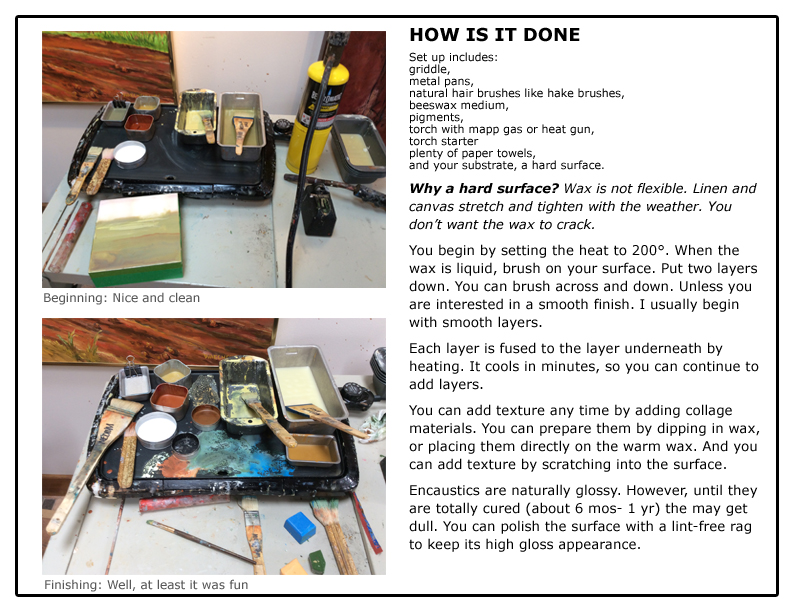Encaustic is a hot wax medium. The wax is a mixture of bees wax and damar resin. The resin is used to harden the wax. An encaustic mixture will not melt unless exposed to temperatures above 120º F. They have been around for thousands of years. In 2000BC, Egyptians used encaustics to paint portraits on their mummies. They are still in good shape and the colors never fade.
To get a variety of colors, I mix the medium with earth pigments. The natural earth and ocher pigments are all natural colors. The French mineral pigments are of 10% manufactured mineral pigments fixed to a natural calcium carbonate base and allow for a semi-transparent color. The yellow I use is an oxide man-made pigment from natural elements. There is a wonderful website where I purchase my earth pigments. Visit here. In the workshops I offer, students are introduced to the earth pigments.
When you purchase:
Encaustics are archival, but you still need to take care of it. Do not leave your piece in a car or trunk of car on a hot day as car’s interiors can heat up very quickly. Also, don’t sit it in a sunny window where temperatures during the day can get very hot. Actually, no art should be in direct sunlight. However, you can hang it in a sunny room near a window.
All temperature extremes should be avoided, excessively high and freezing temperatures will affect the work. Normal ranges of heat and cold will not affect your encaustic artwork.
The surface can be slightly dull to high sheen/luster. I usually buff my work to have a shiny luster. The shiny luster is the natural finish of the wax, but before it is totally cured, usually 6 months, the finish may dull. You can regain the luster by gently buffing the surface with a soft, dry, lint-free cloth.
